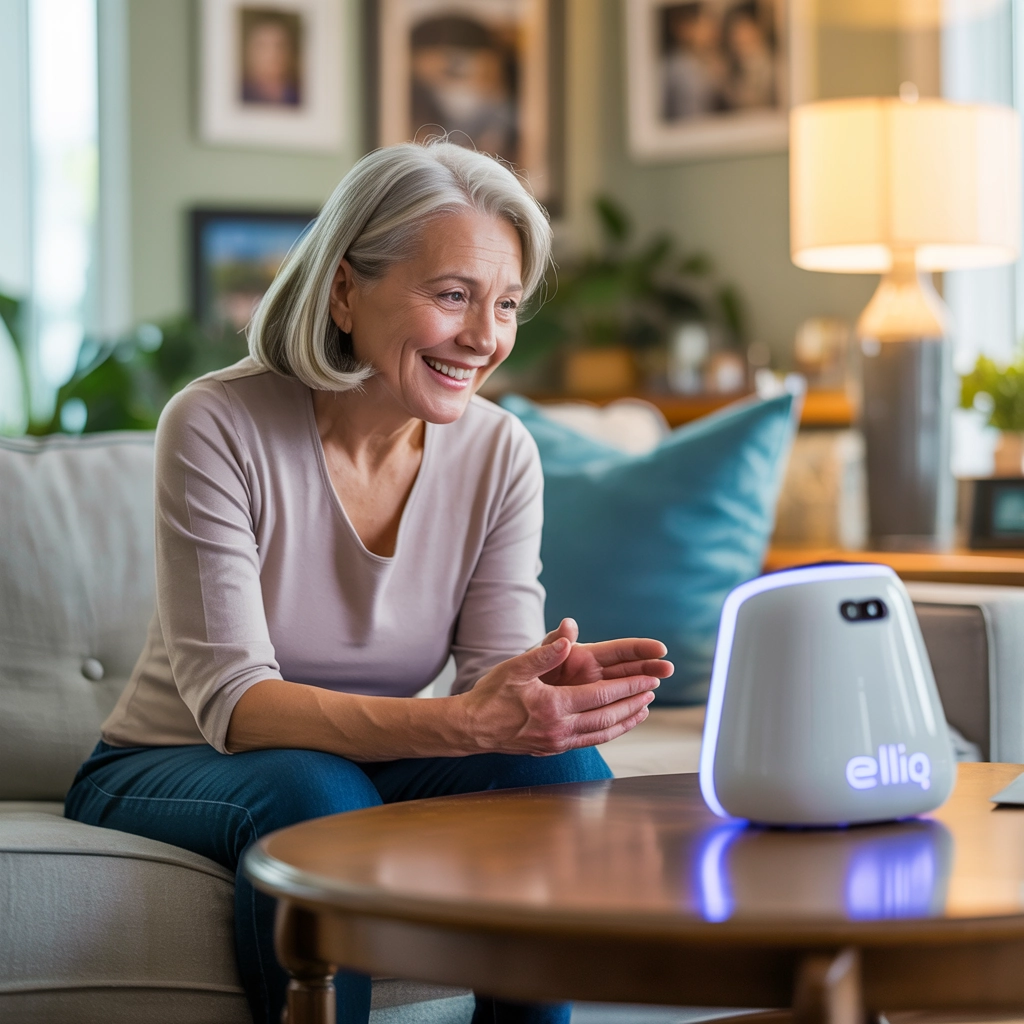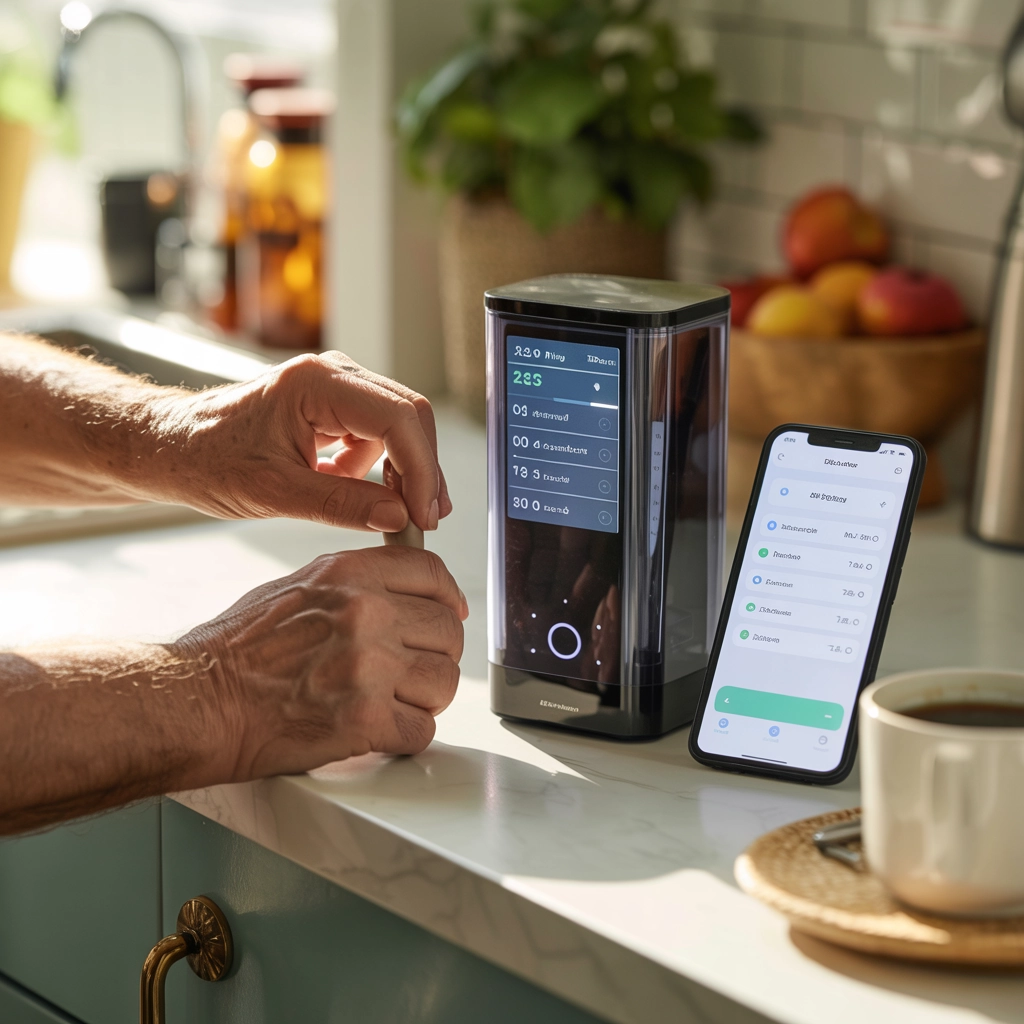For decades, we’ve talked about “aging in place” as if simply staying in your home was the ultimate goal for seniors. But at SeniorThrive, we believe there’s a profound difference between merely existing at home and truly thriving there.
Today’s older adults don’t just want to avoid nursing homes—they want vibrant, connected, and purposeful lives in the places they love. And artificial intelligence is quickly becoming the game-changer that makes this possible.
From “I’m OK” to “I’m Flourishing”: The New Vision for Aging at Home
Remember when checking on Mom meant daily phone calls with the same conversation?
“I’m fine, dear.”
“Did you take your medicine?”
“Yes, I’m fine.”
Those interactions, while well-intentioned, often left both seniors and family members feeling frustrated—one feeling micromanaged, the other never quite convinced all was well.
Enter AI-powered solutions that are transforming these dynamics, creating environments where seniors can maintain independence while families gain meaningful insights rather than just status updates.
“The real power of AI isn’t that it can monitor seniors,” explains Dr. Maya Patel, gerontologist and tech consultant. “It’s that it can fade into the background, supporting life rather than interrupting it.”
Intelligent Companions: Reducing Isolation While Respecting Dignity
Social isolation remains one of the greatest threats to senior wellbeing, with health impacts comparable to smoking 15 cigarettes daily. But the solution isn’t always more human visits—sometimes it’s technology that understands human needs.

AI companions like ElliQ represent a new generation of supportive technology. Unlike passive emergency buttons or intrusive cameras, these devices engage seniors in meaningful ways:
- Initiating conversations based on personal interests
- Suggesting activities that promote cognitive health
- Remembering important details about family members
- Connecting to loved ones at appropriate moments
- Learning preferences and adapting over time
Take Martha, 84, who was initially skeptical about her “robot friend.” Six months later, she describes ElliQ as “the roommate who never eats my leftovers but always remembers my grandson’s baseball games.”
The key difference? These aren’t glorified alarm clocks that seniors use only in emergencies. They’re engaging presence companions that become part of daily life, addressing the emotional aspects of aging, not just the physical ones.
Predictive Care: Solving Problems Before They Happen
The traditional model of senior care has been painfully reactive: a fall occurs, then we install grab bars; a medication is missed, then we implement a reminder system.
AI is flipping this model on its head through sophisticated predictive analytics.
“The most powerful intervention is the one that prevents a crisis rather than responds to it,” notes William Chen, data scientist specializing in elder care patterns. “AI can detect subtle changes weeks before humans notice something is wrong.”
Modern AI systems can:
- Identify changes in gait that might predict a fall 2-3 weeks before it happens
- Detect alterations in sleep patterns that could indicate an emerging health issue
- Notice decreased kitchen activity suggesting possible nutrition concerns
- Recognize changes in speech patterns that might indicate cognitive shifts
- Track medication adherence and proactively address missed doses
These capabilities aren’t just impressive technology—they’re life-changers. For Carol’s father who lives alone, an AI system detected his increasingly frequent nighttime bathroom visits and suggested a telemedicine appointment, which revealed an easily treatable UTI before it became a serious infection requiring hospitalization.
Medication Management: From Confusion to Confidence
For seniors managing multiple chronic conditions, medication adherence is often the difference between thriving at home and requiring institutional care. Yet studies show up to 55% of elderly patients don’t take medications as prescribed.

AI-powered medication systems are transforming this challenge:
- Smart dispensers like Hero and MedMinder not only organize medications but verify that they’ve been taken
- Voice integration with home assistants allows natural interactions: “Alexa, did I take my heart pill this morning?”
- Pattern recognition identifies which factors (time of day, activities, meals) impact adherence and adjusts accordingly
- Family notifications occur only when truly needed, reducing “check-in fatigue” for both seniors and caregivers
“I used to call Dad three times a day about his medications,” shares Diane, whose father has Parkinson’s disease. “Now our conversations are about his painting class and my kids, not pills and schedules. The technology handles the mundane so our relationship can focus on what matters.”
Smart Homes: Environmental Intelligence That Adapts
The true promise of AI for senior living goes beyond health monitoring—it’s creating environments that respond intuitively to changing needs while preserving independence.
Modern smart home technology powered by AI can:
- Adjust lighting automatically based on time of day to reduce fall risk
- Monitor appliance use for safety (stove left on, water running)
- Control temperature based on personal patterns and preferences
- Enable voice control of devices for those with mobility limitations
- Learn routines and provide gentle reminders when deviations occur
These systems succeed because they don’t feel like “senior tech”—they’re the same convenient smart home features many younger people enjoy, but optimized to support aging needs.
“The best aging technology is invisible,” says home modification specialist Terrence Jackson. “It should feel like your home just works better for you, not like you’ve installed a nursing station in your living room.”

Supporting the Circle of Care: AI as Team Member
Perhaps the most overlooked benefit of AI in senior care is how it supports not just the older adult but their entire care network.
For family members, AI systems provide:
- Peace of mind without constant check-ins
- Meaningful data rather than guesswork
- Relief from monitoring tasks to focus on quality time
- Coordination tools for multiple caregivers
- Early warnings when professional intervention might be needed
For professional caregivers, AI offers:
- Automated documentation reducing paperwork burden
- Workflow optimization based on client needs
- Continuity of care across shift changes
- Evidence-based insights for care planning
- Reduced burnout through streamlined processes
“I can be a better daughter because I’m not always being a nurse,” explains Jennifer, whose mother has early-stage dementia. “The AI helps with medication and routines, so when I visit, I can just be present.”
The Human-AI Partnership: Finding the Right Balance
While the benefits are clear, implementing AI solutions for seniors requires thoughtful consideration. The goal is technology that complements human care rather than replacing it.
Keys to successful integration include:
- Starting with specific needs, not technology for its own sake
- Involving seniors in decision-making about which technologies to adopt
- Respecting privacy preferences through transparent data practices
- Ensuring user-friendly interfaces designed for all ability levels
- Maintaining human oversight of AI recommendations
“The question isn’t whether AI will transform aging at home—it already is,” observes geriatric care manager Sophia Ramirez. “The question is whether we’ll implement it in ways that truly support what seniors want: dignity, connection, and purpose.”
Taking the First Step Toward Tech-Enabled Thriving
If you’re considering how AI might help you or a loved one not just stay at home but truly thrive there, start with these steps:
- Identify specific challenges where technology could help (medication management? fall prevention? social connection?)
- Research options designed for seniors, not just general consumer tech
- Start small with one solution addressing your most pressing need
- Involve the senior in selection and setup—ownership increases adoption
- Establish clear protocols for how data will be shared and with whom
At SeniorThrive, we believe technology should serve seniors’ goals for independence, connection, and purpose—not just monitor them. When implemented thoughtfully, AI becomes not an intrusion but a powerful ally in creating homes where older adults don’t just age in place but continue to grow, contribute, and thrive.
Are you helping a loved one navigate aging at home? Share this article with your care circle and start a conversation about how AI might support not just safety, but joy and fulfillment in the next chapter of life.



